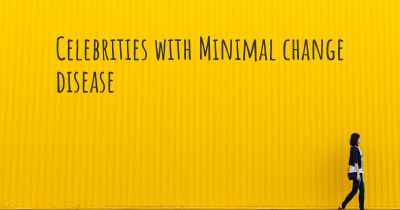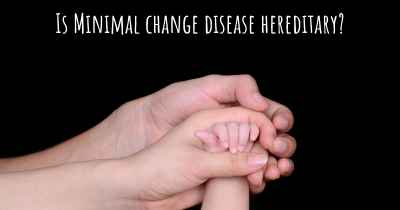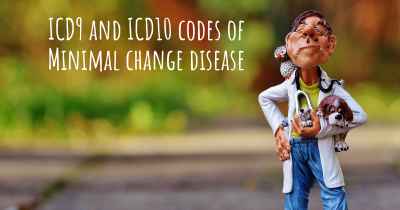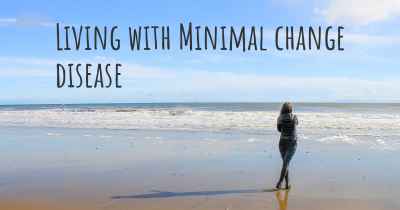Can people with Minimal change disease work? What kind of work can they perform?
See how people with experience in Minimal change disease give their opinion about whether people with Minimal change disease can work and what kind of jobs are more appropriated for people with Minimal change disease
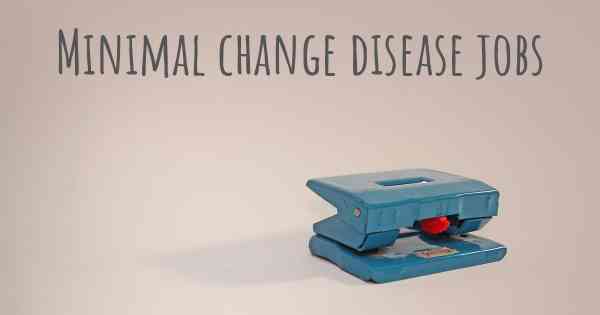
Can people with Minimal Change Disease work?
Minimal Change Disease (MCD) is a form of kidney disease that primarily affects children but can also occur in adults. It is characterized by damage to the glomeruli, which are tiny blood vessels in the kidneys responsible for filtering waste and excess fluid from the blood. MCD is called "minimal change" because the damage is not visible under a regular microscope, requiring a special test called a kidney biopsy to confirm the diagnosis.
When it comes to work, the ability of individuals with Minimal Change Disease to continue working largely depends on the severity of their symptoms and the impact on their overall health and well-being. MCD can vary in its presentation, with some individuals experiencing mild symptoms and others facing more significant challenges.
Impact of Minimal Change Disease on Work
For individuals with mild or well-managed MCD, it is often possible to continue working without major limitations. However, it is crucial for individuals with MCD to prioritize their health and make necessary adjustments to accommodate their condition.
1. Flexibility: Depending on the nature of their work, individuals with MCD may benefit from flexible work arrangements. This could include options such as working from home, adjusting work hours, or having the ability to take breaks when needed. Flexibility allows individuals to manage their symptoms, attend medical appointments, and rest when necessary.
2. Communication: Open and honest communication with employers and colleagues is essential. By informing them about the condition, individuals can seek understanding and support when needed. This may involve discussing the need for accommodations or adjustments to workload during periods of increased symptoms or medical treatments.
3. Stress management: Stress can exacerbate symptoms and negatively impact overall health. Individuals with MCD should prioritize stress management techniques such as mindfulness, relaxation exercises, and seeking emotional support. Creating a work environment that minimizes stress can significantly contribute to overall well-being.
Challenges and Limitations
While many individuals with MCD can continue working, there may be challenges and limitations to consider:
1. Fatigue: Fatigue is a common symptom of MCD. It can be unpredictable and may affect an individual's ability to sustain long hours or engage in physically demanding work. Adjustments to work schedules or workload may be necessary to manage fatigue effectively.
2. Medication side effects: Some individuals with MCD may require medications such as corticosteroids to manage their condition. These medications can have side effects, including mood changes, weight gain, and increased susceptibility to infections. It is important to consider the impact of medication side effects on work performance and discuss any concerns with healthcare providers.
3. Flare-ups: MCD can have periods of remission and flare-ups. During flare-ups, symptoms may worsen, requiring additional medical interventions and potentially impacting work. It is crucial for individuals to have a support system in place and to communicate with their employer during these periods to ensure appropriate accommodations can be made if necessary.
Work Options for Individuals with Minimal Change Disease
While the ability to work may vary depending on individual circumstances, there are various work options that individuals with MCD can consider:
1. Sedentary or desk-based work: Jobs that involve minimal physical exertion and allow individuals to sit for extended periods can be suitable for individuals with MCD. Examples include administrative roles, customer service, writing, data entry, or computer programming.
2. Remote work: Remote work options can provide individuals with the flexibility to manage their symptoms and work from the comfort of their own home. This can be particularly beneficial during periods of increased symptoms or when medical appointments are frequent.
3. Part-time or flexible hours: Part-time work or flexible hours can allow individuals to balance their work commitments with their health needs. This arrangement can help manage fatigue and provide the necessary time for medical treatments and rest.
4. Self-employment or freelancing: Starting a small business or working as a freelancer can provide individuals with greater control over their work schedule and workload. It allows for flexibility in managing symptoms and adapting work requirements as needed.
Conclusion
While Minimal Change Disease can present challenges, many individuals with this condition can continue working with appropriate accommodations and support. Flexibility, open communication, stress management, and understanding the limitations imposed by the disease are key factors in maintaining employment. By considering suitable work options and making necessary adjustments, individuals with MCD can lead fulfilling professional lives while managing their health needs.

